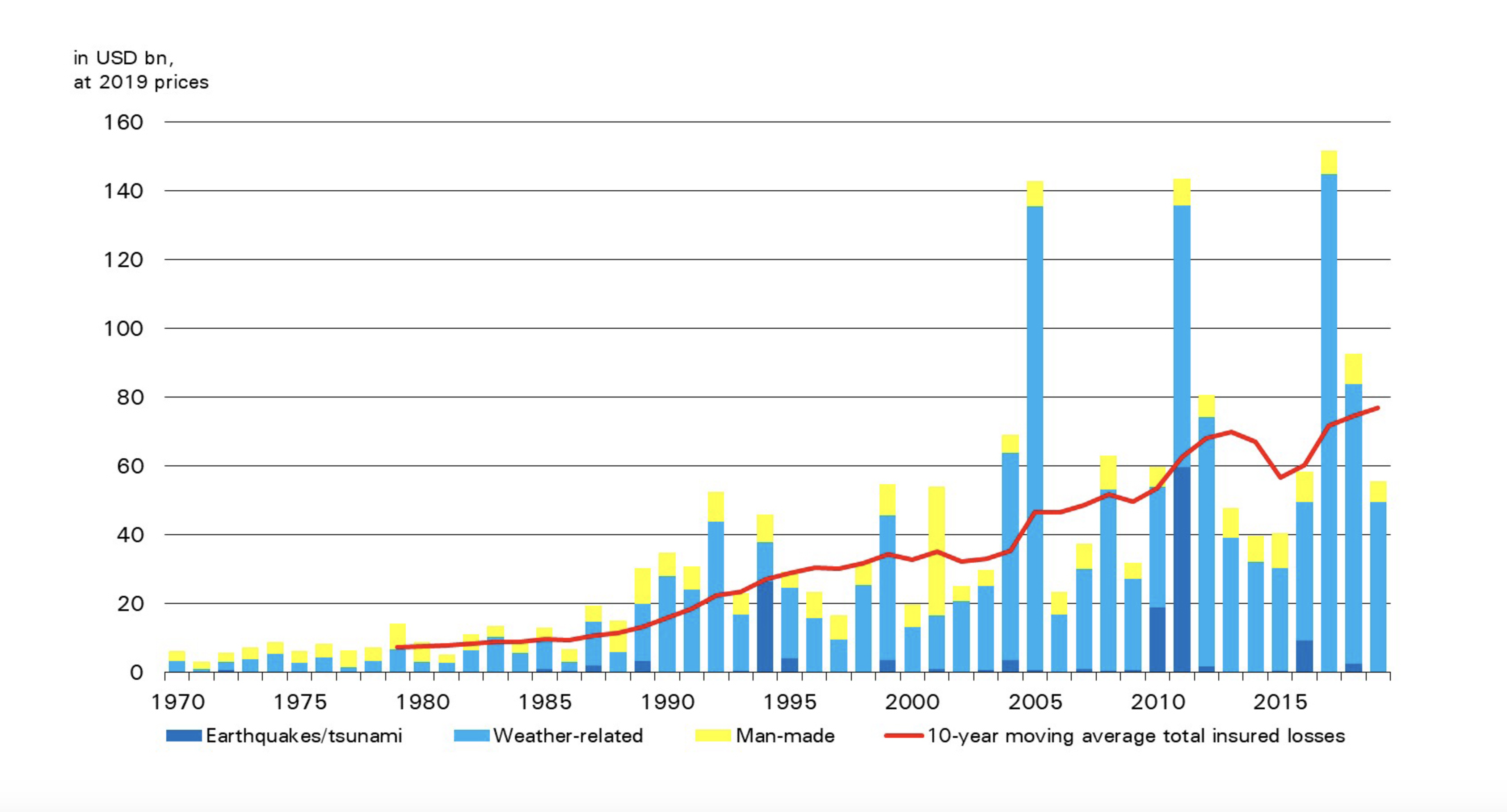Why public-private partnerships will be key to achieving adaptation at scale
Veronica Scotti, chairperson of Public Sector Solutions at Swiss Re, argues that investing in nature can be one of the most effective adaptation measures in the fight against climate change.
- It’s time to back up climate promises with actions
- We must address climate adaptation as well as mitigation
- Cross-sector partnerships can be the catalyst for the changes we need
W hile the world’s media attention right now is on the Australian bushfires and Indonesian floods, Venice, a city very close to my heart, suffered another major flood at the end of 2019. As an Italian, it’s heartbreaking that this ancient and iconic city will be underwater within a century if the acceleration in global warming is not quelled and flood defences installed – because the Mediterranean Sea is forecast to rise by up to 140cm before 2100. The same rise in sea level is predicted to swamp a 176-mile long coastline in the north Adriatic and parts of the west coast of Italy. The root cause of sea level rise, of course, is global warming caused by greenhouse gas emissions
Agonisingly slow progress
In order to avoid the most serious impacts of climate change, such as coastal flooding, scientists have estimated the amount of greenhouse gases that can be released into the atmosphere before the 1.5˚-2˚C average temperature increase is breached. This is the ’carbon budget’. Given our estimated remaining carbon budget, we need global carbon emissions to reach net zero by around 2050.
Progress towards a net-zero carbon world has been agonisingly slow. Despite all the fine words on the subject, it doesn’t seem much has been achieved. Yes, the Paris Agreement was an inspiring start, but the outcome of the recent UN Climate Summit in Madrid mainly consisted of vague pledges. More encouraging has been the EU agreement to make the 28-member bloc carbon-neutral by 2050, albeit without Poland’s inclusion. Perhaps the most positive, concrete element of this “European Green Deal” was confirmation from the European Investment Bank – the EU’s lending arm – that it would provide €1 trillion in investment funds to support climate action and environmental sustainability over the next decade.
Putting our muscle behind the push for net-zero carbon
Sustainability – and everything this entails – is at the forefront of our business activities. After all, we can’t improve economic efficiency, protect and restore nature’s ecosystems and enhance social wellbeing if societies, governments and individuals remain vulnerable to risk. In December 2015, Swiss Re signed the Paris Pledge for Action to affirm our support for the Paris Agreement. Since then we’ve taken various steps to meet the targets across all our business activities, including our assets, liabilities and operations. Signing up to the “Business Ambition for 1.5°C” at the UN Climate Action Summit is a logical further step for us to decarbonize our business model and lead the way towards a low-carbon future. Focusing on the asset side, Swiss Re joined other large asset owners to launch the UN-convened Net-Zero Asset Owner Alliance, whose signatories commit to carbon-neutral investment portfolios by 2050.

Children learning about mangroves in the Seychelles. Photo by UN Women/Flickr
At the same time, more needs to be done to help communities better cope with the impacts of climate change. The momentum towards strengthening the global response to the threat of climate change was evident recently in New York, where the UN Development Programme, Germany, UK and the Insurance Development Forum announced commitments to increase insurance protection in climate-exposed countries. These new programmes, which accelerate the implementation of risk-management solutions to increase adaptation and resilience to climate risks, should benefit 500 million individuals.
Front-line warriors
Among Swiss Re’s front-line warriors in the battle to strengthen resilience-sustainability strategies – and consequently also to accelerate momentum towards a net-zero carbon future – is its public sector solutions arm, which helps remove the obstacles that prevent societies staying the course when faced with natural disasters and other unexpected setbacks. We do this by focusing on partnerships with public sector entities, because they are exposed to many climate change-related risks, the resultant losses of which are absorbed by local governments and ultimately their citizens. So it stands to reason that as a risk-knowledge company, we engage with them to find the best ways to mitigate these risks.
Committed to developing solutions to mitigate and adapt to climate change.
Investing in nature can be one of the most effective adaptation measures in the fight against climate change. Carbon capture is so critical for the next 20 years – and some natural assets, such as kelp forests, can be more effective at this than man-made solutions.
In one such sustainability project, Swiss Re teamed up with The Nature Conservancy and regional governments in Mexico to help protect the Mesoamerican coral reef off the coast of Mexico’s Yucatan Peninsula. Research had shown that there was a connection between a healthy coral reef and the region’s ability to sustain itself economically. In other words, if the reef were to die as a result of pollution and storm damage, it would no longer be able to prevent beach erosion, which, in turn, would threaten the region’s key source of income, namely tourism. So we were asked whether we could devise an insurance solution that would ensure rapid disbursement of funds to enable trained community members to deal with deal with restoring damaged reef following a severe storm, in a time-critical fashion. The result was the world’s first ever nature-based insurance solution to protect Mexico’s coral reef. We took it a step further and through the Swiss Re Foundation also helped finance the training of the local reef rangers, to create new jobs and expand the economic benefits for all.

Catastrophe-related insured losses (1970-2019). Source: Swiss Re
The smart way to go
We need more impetus behind the financing and embedding of adaptation at scale. The execution of effective decarbonization pathways, including acceleration of the commercial viability of carbon-capture technologies and low-carbon alternatives in critical sectors such as energy and transport, will give us that impetus. This can only happen at scale and speed if the public and the private sectors come together on joint execution plans focused on ultimate efficacy and long-term impact. For too long, the climate debate has been caught up in headlines and soundbites with limited cross-sectional fertilisation. We need to move into coordinated action mode if we want to avoid the loss of treasures such as Venice. I will be in Davos with my counterparts in the public sector to tackle this challenge together – because public-private partnerships are the smart way to go.
The ideas presented in this article aim to inspire adaptation action – they are the views of the author and do not necessarily reflect those of the Global Center on Adaptation.